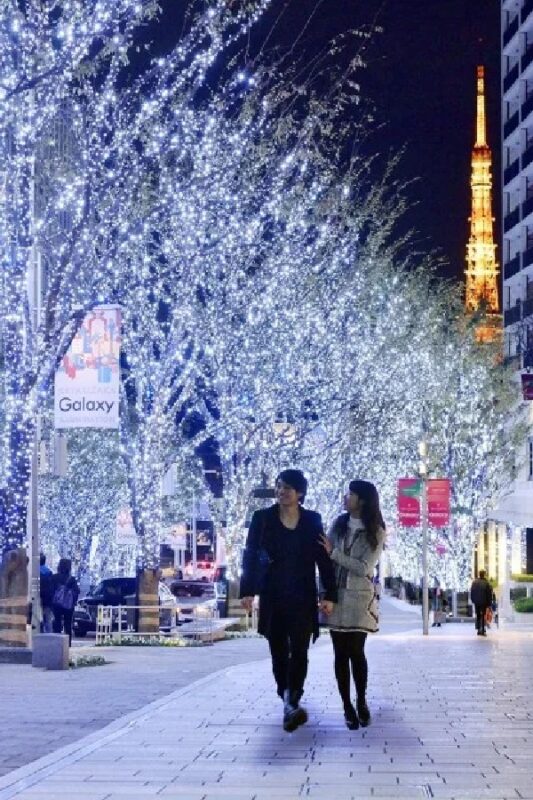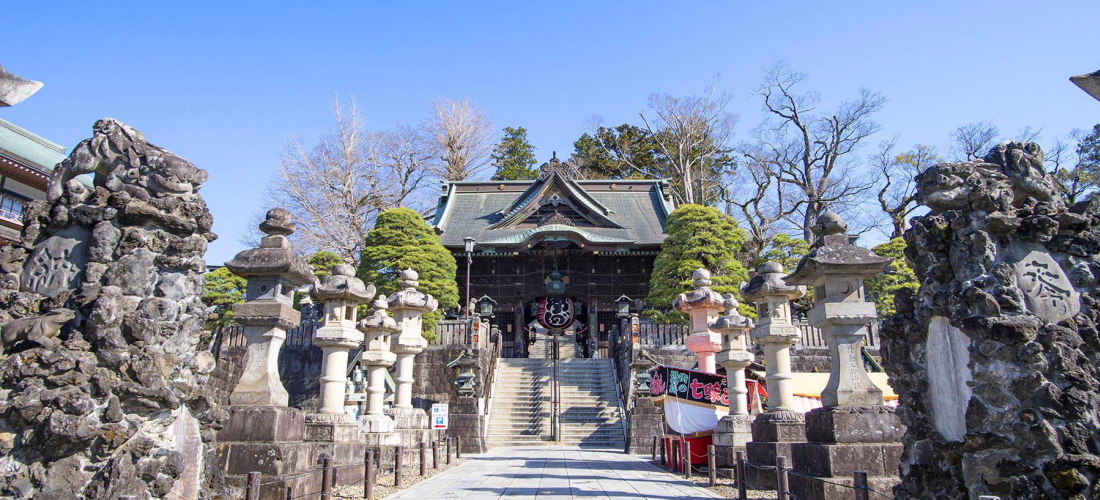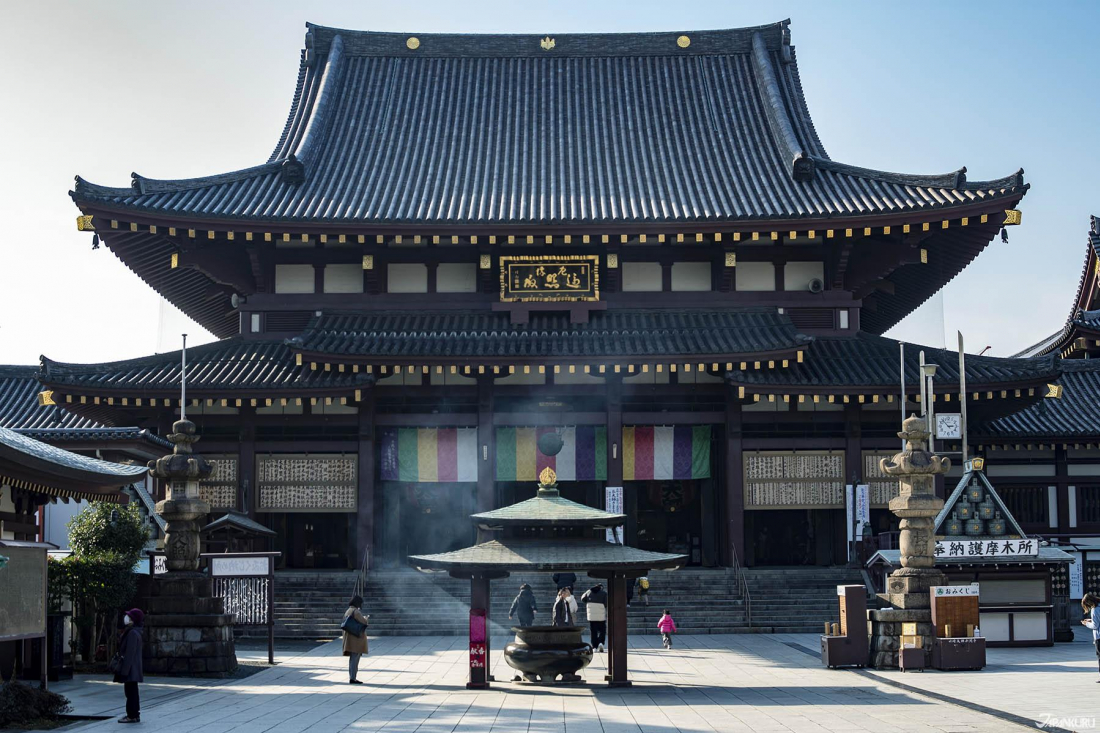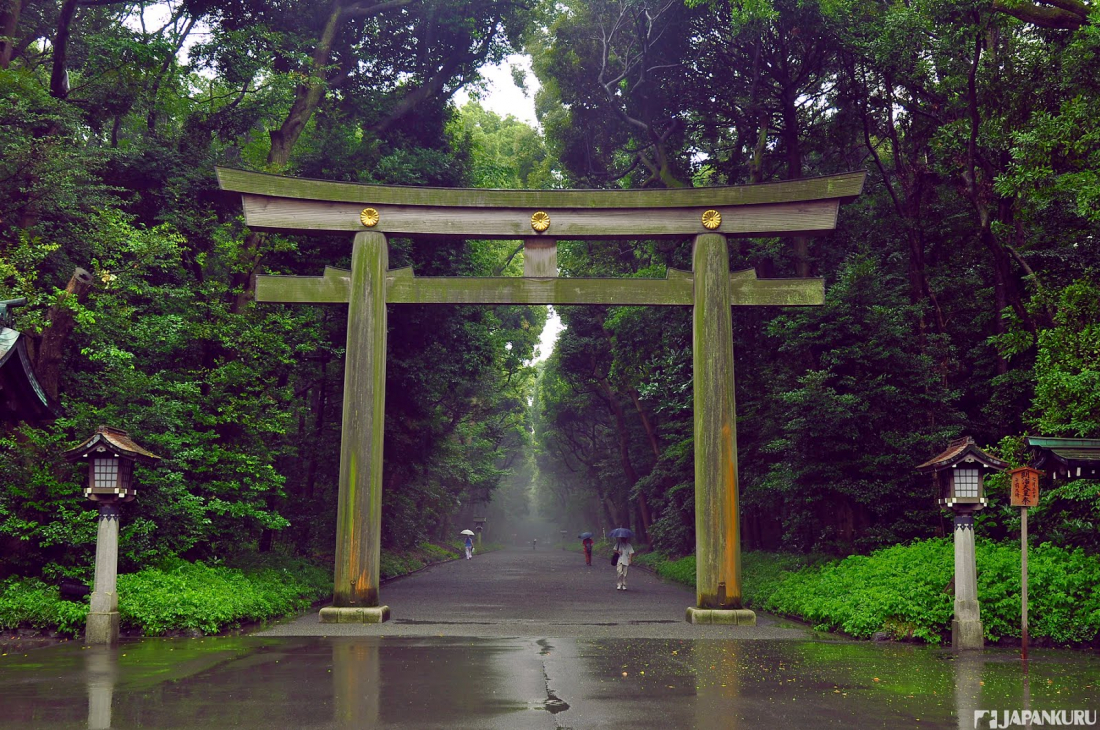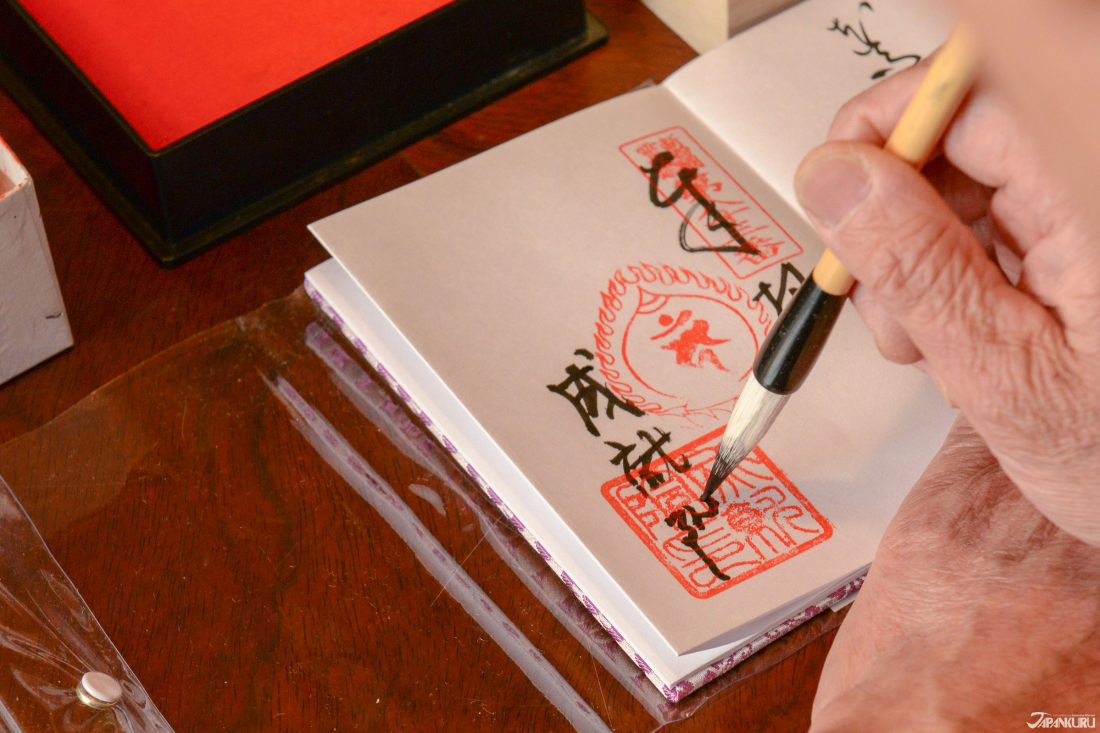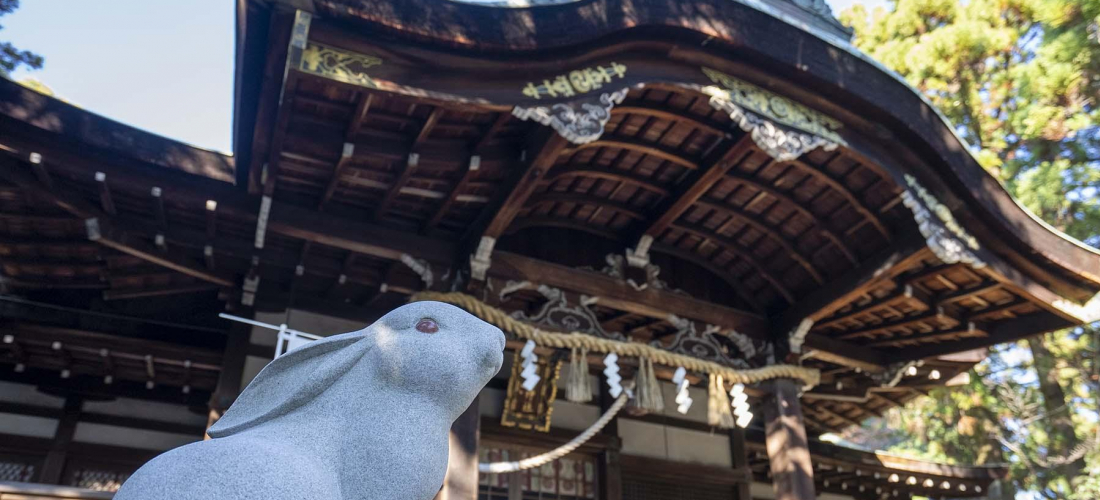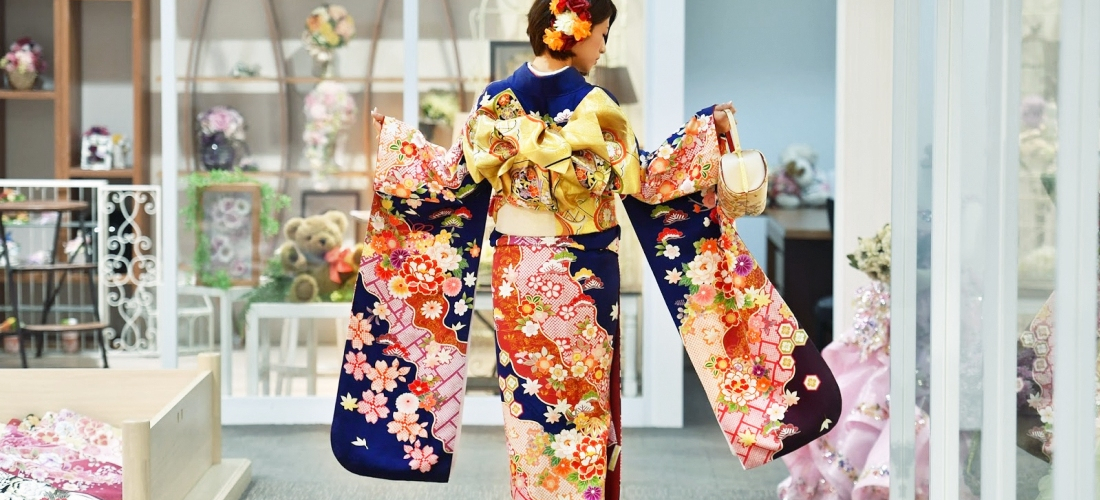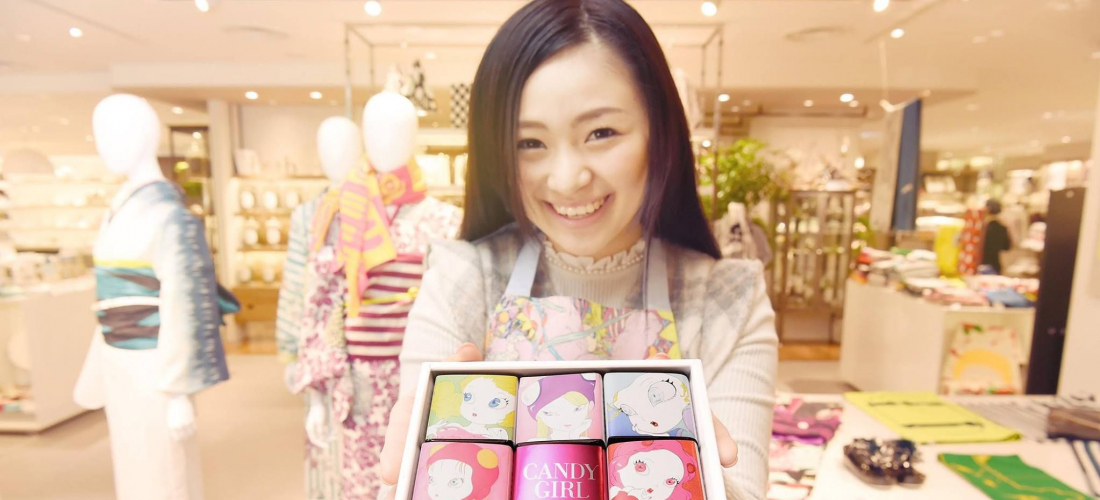CONTENTS
New Year’s celebrations are big in Japan, and hatsumode is one of the most important traditions of the year!
Japan’s New Year’s Traditions
Celebrated each year on January first, the start of the New Year is the time for some of the most important seasonal festivities in Japan, when many people return home to celebrate with their families. To celebrate the holiday the traditional way, families will eat traditional meals called osechi, and many people will try their best to be awake to catch the very first sunrise of the year, called the "hatsuhinode" (初日の出). One of the most important rituals for the New Year, however, is "hatsumode" (初詣) – one's first visit to a shrine or temple in the New Year.
Hatsumode is the single largest religious "pilgrimage" event in the world, surpassing even the Hajj in Mecca, and it's celebrated at shrines and temples big and small throughout Japan. The centuries-old ritual is important to this day because it's a chance for each person to pray, wish for good luck and good health throughout the coming year, and even pick a fortune to see what's in store for the coming months. (Although there's always a risk of getting a bad fortune, which some shrines and temples are notorious for giving out.) The ancient custom is said to reach back to a shrine visit undertaken by the 12th-century shogun Minamoto no Yoritomo, and an old tradition of praying through the night on New Year's Eve until New Year's Morning. These days, some people still like to show up at shrines or temples before midnight and count down the new year on sacred grounds. Others will show up at three or four in the morning for an early start… or make their over a week into the new year, with a better late than never attitude towards their hatsumode experience. Any time during the first few days of the new year is bound to be busy for just about any shrine or temple in Japan, but there are a few that are clear crowd-pleasers.
Popular Hatsumode Shrines
Japan's two major religions, Buddhism and Shinto, have spent centuries mixing together before being rather suddenly ripped apart, leading to common hatsumode traditions at both Shinto shrines and Buddhist temples in Japan. (More about the difference between shrines and temples here.) But in terms of yearly hatsumode visitors, it's a Shinto shrine that has the highest headcount of any one destination. Tokyo's Meiji Jingu Shrine, built for Japan's Emperor Meiji (1852-1912) and his wife Empress Shoken (1849-1914), can be found at the center of an enormous wooded shrine ground wedged between Harajuku and Yoyogi Park. It's busy throughout the year as one of Tokyo's biggest sightseeing destinations, but crowds swell for hatsumode season, when a whopping 3.2 million people arrive to pray for the New Year.
Meiji Jingu Shrine (明治神宮)
Yoyogikamizonocho, Shibuya City, Tokyo
Official Website (en)
Another major destination for shrine lovers during the New Year (and all year round) is Fushimi Inari Shrine in Kyoto, which is known for its many orange shrine gates. This famous shrine is stretched across a mountainside, and on an average day, the densely packed shrine gates at the bottom of the mountain are crowded with visitors, but the paths near the top of the mountain tend to offer a somewhat more relaxed atmosphere. On January first, there's no escape from the crowds of excited hatsumode visitors, which total more than 2.5 million over the first few days of the year!
Fushimi Inari Shrine (伏見稲荷大社)
68 Fukakusa Yabunouchi-cho, Fushimi-ku, Kyoto
Official Website (en)
Popular Hatsumode Temples
The Meiji Shrine of Tokyo might be Japan's most popular hatsumode spot, but the #2 destination isn't far behind. Naritasan Shinshoji Temple, as you might be able to guess from the name, is quite near Narita Airport, about an hour outside Tokyo. Despite this suburban location, however, it attracts more than 3 million hatsumode visitors a year! Naritasan Shinshoji was founded over a thousand years ago, and made popular by Tokugawa Ieyasu (a 16th-century "unifier of Japan"), making it a truly historic venue for ringing in the new year.
Naritasan Shinshoji Temple (成田山新勝寺)
1 Narita, Narita, Chiba
Official Website (en)
The second most popular hatsumode temple in Japan is also in a Tokyo suburb, although this one is just south of the city in the portside town of Kawasaki. Kawasaki Daishi, formally known by the name Heikenji Temple, draws crowds of over 3 million each New Year. And people come both to pray for the months ahead, and to nibble on the tasty snacks available along the old-fashioned shopping street leading to the temple. Retro tontoko candy, which is chopped up on huge cutting boards right before the wide eyes of passing sweet-tooths, is not to be missed!
Kawasaki Daishi Heikenji Temple (川崎大師 平間寺)
4-48 Daishimachi, Kawasaki Ward, Kawasaki, Kanagawa
Official Website (en)
Have a Happy Hatsumode with A New Goshuincho
When getting ready for a hatsumode outing, the first thing you need to remember is to wrap up warm. For most of Japan, hatsumode season means chilly winter weather, so before getting ready to spend hours outside at a shrine or temple, it's important to layer on a warm coat like the many available at Japanese department store Lumine, plus a scarf, gloves, and whatever else you need to keep warm and toasty in the winter air.
To truly get the most out of this fun yearly celebration, however, the most important item to prep is a goshuincho! Goshuin are official seals from shrines and temples, which can be gathered in books called goshuincho for a beautiful collection of Japanese calligraphy and traditional stamps. (Find out more about goshuin collecting here!) https://www.japankuru.com/en/culture/e3628.html Many shrines and temples offer special goshuin seals for the very beginning of the year, which makes it one of the most exciting times to visit lots of shrines and temples and get collecting. Start the year with a brand new goshuincho, like the sophisticated minimalistic goshuincho from Nakagawa Masashichi or these colorful fabric-covered goshuincho handmade by a seller on Iichi, wrap it up safe in this hand-dyed indigo case available from the JR Times online shop, and start your hatsumode adventure! Whether you choose to visit one of Japan's most crowded destinations, or you spend the first few days of the year collecting goshuin from tiny nearby shrines and temples instead, hatsumode is an experience you won't want to miss over the Japanese New Year!
Details
NAME:Hatsumode (初詣)
Looking for the latest trends and products coming out of Japan? We've got you covered!
COMMENT
FEATURED MEDIA
VIEW MORE 
A New Tokyo Animal Destination: Relax & Learn About the World’s Animals in Japan
#pr #japankuru #anitouch #anitouchtokyodome #capybara #capybaracafe #animalcafe #tokyotrip #japantrip #카피바라 #애니터치 #아이와가볼만한곳 #도쿄여행 #가족여행 #東京旅遊 #東京親子景點 #日本動物互動體驗 #水豚泡澡 #東京巨蛋城 #เที่ยวญี่ปุ่น2025 #ที่เที่ยวครอบครัว #สวนสัตว์ในร่ม #TokyoDomeCity #anitouchtokyodome

Shohei Ohtani Collab Developed Products & Other Japanese Drugstore Recommendations From Kowa
#pr #japankuru
#kowa #syncronkowa #japanshopping #preworkout #postworkout #tokyoshopping #japantrip #일본쇼핑 #일본이온음료 #오타니 #오타니쇼헤이 #코와 #興和 #日本必買 #日本旅遊 #運動補充能量 #運動飲品 #ช้อปปิ้งญี่ปุ่น #เครื่องดื่มออกกำลังกาย #นักกีฬา #ผลิตภัณฑ์ญี่ปุ่น #อาหารเสริมญี่ปุ่น

도쿄 근교 당일치기 여행 추천! 작은 에도라 불리는 ‘가와고에’
세이부 ‘가와고에 패스(디지털)’ 하나면 편리하게 이동 + 가성비까지 완벽하게! 필름카메라 감성 가득한 레트로 거리 길거리 먹방부터 귀여움 끝판왕 핫플&포토 스폿까지 총집합!
Looking for day trips from Tokyo? Try Kawagoe, AKA Little Edo!
Use the SEIBU KAWAGOE PASS (Digital) for easy, affordable transportation!
Check out the historic streets of Kawagoe for some great street food and plenty of picturesque retro photo ops.
#pr #japankuru #도쿄근교여행 #가와고에 #가와고에패스 #세이부패스 #기모노체험 #가와고에여행 #도쿄여행코스 #도쿄근교당일치기 #세이부가와고에패스
#tokyotrip #kawagoe #tokyodaytrip #seibukawagoepass #kimono #japantrip

Hirakata Park, Osaka: Enjoy the Classic Japanese Theme Park Experience!
#pr #japankuru #hirakatapark #amusementpark #japantrip #osakatrip #familytrip #rollercoaster #retrôvibes #枚方公園 #大阪旅遊 #關西私房景點 #日本親子旅行 #日本遊樂園 #木造雲霄飛車 #히라카타파크 #สวนสนุกฮิราคาตะพาร์ค

🍵Love Matcha? Upgrade Your Matcha Experience With Tsujiri!
・160년 전통 일본 말차 브랜드 츠지리에서 말차 덕후들이 픽한 인기템만 골라봤어요
・抹茶控的天堂!甜點、餅乾、飲品一次滿足,連伴手禮都幫你列好清單了
・ส่องมัทฉะสุดฮิต พร้อมพาเที่ยวร้านดังในอุจิ เกียวโต
#pr #japankuru #matcha #matchalover #uji #kyoto #japantrip #ujimatcha #matchalatte #matchasweets #tsujiri #말차 #말차덕후 #츠지리 #교토여행 #말차라떼 #辻利抹茶 #抹茶控 #日本抹茶 #宇治 #宇治抹茶 #日本伴手禮 #抹茶拿鐵 #抹茶甜點 #มัทฉะ #ของฝากญี่ปุ่น #ชาเขียวญี่ปุ่น #ซึจิริ #เกียวโต

・What Is Nenaito? And How Does This Sleep Care Supplement Work?
・你的睡眠保健品——認識「睡眠茶氨酸錠」
・수면 케어 서플리먼트 ‘네나이토’란?
・ผลิตภัณฑ์เสริมอาหารดูแลการนอน “Nenaito(ネナイト)” คืออะไร?
#pr #japankuru #sleepcare #japanshopping #nenaito #sleepsupplement #asahi #睡眠茶氨酸錠 #睡眠保健 #朝日 #l茶胺酸 #日本藥妝 #日本必買 #일본쇼핑 #수면 #건강하자 #네나이토 #일본영양제 #อาหารเสริมญี่ปุ่น #ช้อปปิ้งญี่ปุ่น #ร้านขายยาญี่ปุ่น #ดูแลตัวเองก่อนนอน #อาซาฮิ

Japanese Drugstore Must-Buys! Essential Items from Hisamitsu® Pharmaceutical
#PR #japankuru #hisamitsu #salonpas #feitas #hisamitsupharmaceutical #japanshopping #tokyoshopping #traveltips #japanhaul #japantrip #japantravel

Whether you grew up with Dragon Ball or you just fell in love with Dragon Ball DAIMA, you'll like the newest JINS collab. Shop this limited-edition Dragon Ball accessory collection to find some of the best Dragon Ball merchandise in Japan!
>> Find out more at Japankuru.com! (link in bio)
#japankuru #dragonball #dragonballdaima #animecollab #japanshopping #jins #japaneseglasses #japantravel #animemerch #pr

This month, Japankuru teamed up with @official_korekoko to invite three influencers (originally from Thailand, China, and Taiwan) on a trip to Yokohama. Check out the article (in Chinese) on Japankuru.com for all of their travel tips and photography hints - and look forward to more cool collaborations coming soon!
【橫濱夜散策 x 教你怎麼拍出網美照 📸✨】
每次來日本玩,是不是都會先找旅日網紅的推薦清單?
這次,我們邀請擁有日本豐富旅遊經驗的🇹🇭泰國、🇨🇳中國、🇹🇼台灣網紅,帶你走進夜晚的橫濱!從玩樂路線到拍照技巧,教你怎麼拍出最美的夜景照。那些熟悉的景點,換個視角說不定會有新發現~快跟他們一起出發吧!
#japankuru #橫濱紅磚倉庫 #汽車道 #中華街 #yokohama #japankuru #橫濱紅磚倉庫 #汽車道 #中華街 #yokohama #yokohamaredbrickwarehouse #yokohamachinatown

If you’re a fan of Vivienne Westwood's Japanese designs, and you’re looking forward to shopping in Harajuku this summer, we’ve got important news for you. Vivienne Westwood RED LABEL Laforet Harajuku is now closed for renovations - but the grand reopening is scheduled for July!
>> Find out more at Japankuru.com! (link in bio)
#japankuru #viviennewestwood #harajuku #omotesando #viviennewestwoodredlabel #viviennewestwoodjapan #비비안웨스트우드 #오모테산도 #하라주쿠 #日本購物 #薇薇安魏斯伍德 #日本時尚 #原宿 #表參道 #japantrip #japanshopping #pr

Ready to see TeamLab in Kyoto!? At TeamLab Biovortex Kyoto, the collective is taking their acclaimed immersive art and bringing it to Japan's ancient capital. We can't wait to see it for ourselves this autumn!
>> Find out more at Japankuru.com! (link in bio)
#japankuru #teamlab #teamlabbiovortex #kyoto #kyototrip #japantravel #artnews
Photos courtesy of teamLab, Exhibition view of teamLab Biovortex Kyoto, 2025, Kyoto ® teamLab, courtesy Pace Gallery

Japanese Makeup Shopping • A Trip to Kamakura & Enoshima With Canmake’s Cool-Toned Summer Makeup
#pr #canmake #enoshima #enoden #에노시마 #캔메이크 #japanesemakeup #japanesecosmetics

⚔️The Robot Restaurant is gone, but the Samurai Restaurant is here to take its place. Check it out, and don't forget your coupon!
🍣신주쿠의 명소 로봇 레스토랑이 사무라이 레스토랑으로 부활! 절찬 쿠폰 발급중
💃18歲以上才能入場的歌舞秀,和你想的不一樣!拿好優惠券去看看~
#tokyo #shinjuku #samurairestaurant #robotrestaurant #tokyotrip #도쿄여행 #신주쿠 #사무라이레스토랑 #이색체험 #할인이벤트 #歌舞伎町 #東京景點 #武士餐廳 #日本表演 #日本文化體驗 #japankuru #japantrip #japantravel #japanlovers #japan_of_insta

Japanese appliance & electronics shopping with our KOJIMA x BicCamera coupon!
用JAPANKURU的KOJIMA x BicCamera優惠券買這些正好❤️
코지마 x 빅 카메라 쿠폰으로 일본 가전 제품 쇼핑하기
#pr #japankuru #japanshopping #kojima #biccamera #japaneseskincare #yaman #dji #osmopocket3 #skincaredevice #日本購物 #美容儀 #相機 #雅萌 #日本家電 #일본여행 #면세 #여행꿀팁 #일본쇼핑리스트 #쿠폰 #일본쇼핑 #일본브랜드 #할인 #코지마 #빅카메라 #japankurucoupon
MAP OF JAPAN
SEARCH BY REGION

LATEST
VIEW MOREEVENT CALENDAR
VIEW MORE